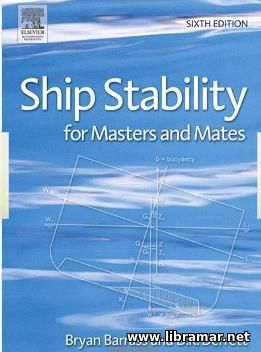 One of the most popular and practical books on ship stability. This textbook has been subjected to a full review and update by its new author in order to ensure a modern and deep coverage of all relevant topics.
The main content of the publication has been provided with a completely new and unique introductory part giving the types of the vessels together with the general characteristics; this has been done to indicated to the reader the typical or actual sizes of the merchant ships of today. In addition, there are four completely new chapters covering the ship squat, interaction, deadweight scale and, finally, trim and stability.
There is also one more new section in the Appendices and it deals with the draft surveys - the content of this section has been re-written to make it more understandable for the students of naval architecture. The authors have paid really careful attention to the fundamental theoretical principles of ship stability and strength, and they have given so many exercise questions and worked examples to make sure that the students who really work through this volume will have good results.
This is an excellent textbook delving into many basic matters of ship stability and therefore great for all categories of readers, from students to the pro engineers; it shall also be used as a very helpful shipboard reference book.
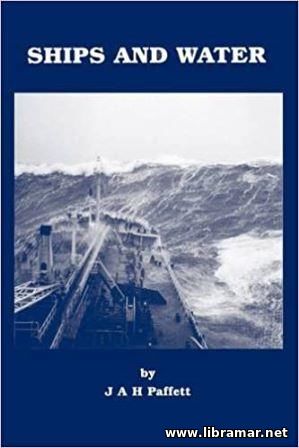 The ship navigators shall always be concerned about the voyage planning, constantly adjusting and updating the course of their vessel according to the information they receive. The pilots, in turn, handle the vessels in relatively safe conditions while entering and leaving ports, on the basis of their practical experience of maneuvering in confined waters.
The idea of this volume is to explain what the ship navigators feel so that the readers can understand it, to demonstrate that the ship-water interaction is not quite straightforward. Written by the well-experienced ship pilot, the book will give readers the clear explanations of the things they need to know. It will be of great practical use for the younger officers and trainee pilots due to the unequivocal manner and plain language used.
We would particularly recommend this book to the people who need to understand the basics of the naval architecture but do not want or do not have time to dig too deep into the theory. Having read this one, they will get to know the necessary essentials and be able to apply them when handling their ships. There are many drawings and illustrations supplementing the text. The book covers virtually all what they would need to be aware of to safely navigating the shops.
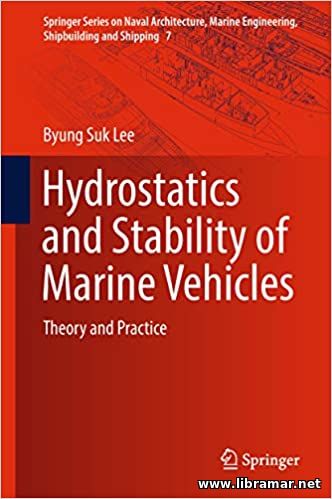 This book was written to address the important aspects of the hydrostatics and stability of the vessels and other marine facilities. We all know that this is one of the most critical areas of the naval architecture. The content covers the essential concepts under assumption that the readers have little to no prior technical knowledge. All of the topics covered in the volume have been dealt with in a very methodical manner, being explained step by step to achieve better understanding of the subject.
The book can be used by the students, willing to enhance their knowledge, as a good reference tool and textbook. There are in total ten chapters in the book, opening with the introduction where the basic vessel geometry is explained and forms are defined. The second chapter covers the flotation matters including the Archimedes’ Principle, static equilibrium, stability curves etc. The next chapters are dealing with the longitudinal stability and trim of the ship, followed by the centroids and methods.
Then, two chapters address the static ship stability at small and large angles of heel. The remaining chapters are devoted to the intact stability, dynamic stability and damage stability. This is a real must-have for any naval architect, from student to the professional.
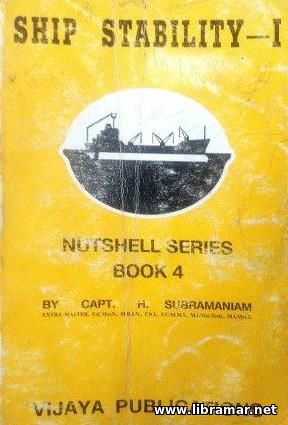 This is one more excellent book on ship stability and will be greatly appreciated by all naval architects. Like any other book belonging to the well-known Nutshell series, the publication is intended for use while the student is out of sea. The publication is covering the entire syllabuses for both watch keeping officers and second mates; however, it may also be useful to the marine engineers.
The book opens with the chapters on density and relative density, flotation and water pressure, followed by the chapters addressing deadweight and displacement, effect of density on them, centers of gravity and buoyancy, as well as other essentials. The transverse statical stability of the vessels and their equilibrium are discussed in the following chapters, together with the free surface effect, hydrostatic curves, tables and draft.
Each of the chapter is supplemented with the exercises to ensure proper understanding of the material covered. Since the due knowledge of the naval architecture and stability in particular is a must-have for any seaman, we would recommend this publication to everyone on board ship, taking into account the reader-friendliness of the book making it easy to read by literally anyone having basic knowledge of math.
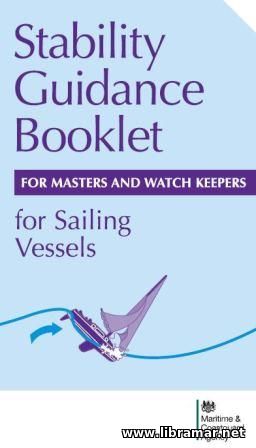 This is a guidance published by the Maritime and Coastguard Agency, or MCA for short, with the intention to give the Masters and watchkeeping officers of the sailing vessels with the brief instructions to be followed. The content and arrangement of the material is more or less similar to the ones applied in the Stability Guidance Booklet for Powered Vessels, also released by the MCA.
The volume was developed jointly by the MCA and contributors representing the world respected entities, such as the RINA, RYA, The Royal National Lifeboat Institution, and others. Of course, it shall be noted and remembered that the ultimate responsibility for all actions taken rests with the Master at all times, but the information contained in this small volume will provide the ready-to-use checklists and other supplementary tools, saving time that would otherwise been wasted for searching.
We would strongly recommend having an electronic copy of this publication and, moreover, to print it out and have it readily available on board any sailing vessel for ready reference whenever required. The instructions are clear and informative, and the illustrations make it even easier to understand the material.
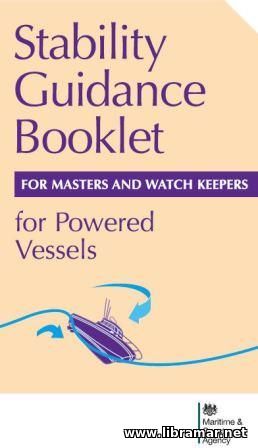 This is a compact booklet released by the MCA, standing for the Maritime and Coastguard Agency, one of the most recognized and respected authorities in the world of the maritime shipping. The booklet is intended to provide the Masters and watchkeepers of the powered seagoing ships with the brief information on what they shall be concentrated on in terms of the stability.
The information is arranged in six chapters, the first one giving the ship-specific checklist with the tips on how it shall be populated. The general cautions have been addressed in the second chapter, while the third one contains the necessary stability checklists. The next two chapters contain some explanatory notes and definitions.
Finally, the closing chapter of the booklet provides the Masters of the powered vessels with some additional guidance. Despite the compact size of the booklet, it is practically useful and should be referred to at all time; the content is clear and understandable, thanks to the contributions made by the industry professionals, and numerous illustrations supplementing the text. Note that there is a similar publication, providing the necessary stability guidance as applied to the sailing vessels.
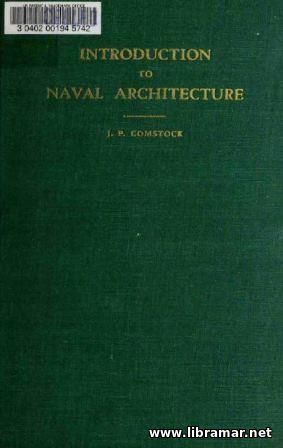 The present publication is the very good course in naval architecture covering the essential theoretical knowledge required to be possessed by the naval architects. The main objective of the author was to acquaint the trainees with the theoretical basics and provide the clear explanation on their interrelation and progressive application in the ship hull design. Note that it should not be looked at as a replacement to any standard reference volume but shall rather be treated as a leading title.
It will be the excellent reference source for the students of the naval architecture. In fact this is a good introduction, as it is clearly stated in the title of the book, and those willing to get a deep understanding and knowledge of the subject, should spend more time and efforts. The readers will go through the entire process of ship hull design, understand how the main hull characteristics shall be chosen so that the requirements advised by the clients, can be satisfied.
The book is recommended to the students and is a perfect supplement to any standard training program. The material is explained in a very simple and understandable way, including all calculations as well as the design matters.
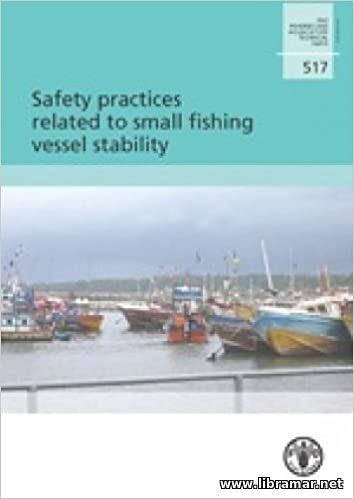 The main objective of the present technical paper was the introduction of the essential principles of the small fishing vessel stability as well as provision of the clear guidance on what shall be done by the crew members of the subject vessels in order to keep the stability maintained adequate. It is mainly aimed at the people engaged in the fishing industry including the mariners, shipbuilders, owners of the fishing vessels and all other parties.
We would also recommend the publication to be used as guidance for the people caring about the safety of their ship. The book opens with a brief introduction followed by the definitions of the terminology used. After that, the main precautions relating to the small ship stability are provided, including securing of the heavy items and free surface effect, icing and catch stowage, quartering and following seas, means of closing etc.
The alterations done to the ship construction are addressed in the next chapter. The stability criteria applied to the small fishing vessels are dealt with in detailed within a separate section, followed by the stability documentation including the hydrostatic and cross curves, operating conditions and other aspects.
« 1 2 3 4 5 6 7 ... 9 10 » |







